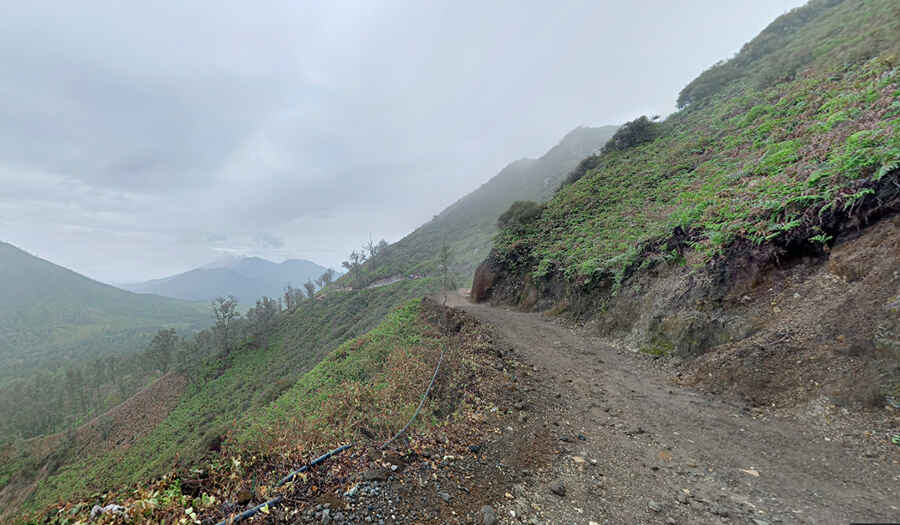The wild road to the blue fire of Kawah Ijen
Mount Ijen is a stratovolcano with a picturesque turquoise crater lake known as Kawah Ijen (Ijen Crater) located on the boundary of Banyuwangi Regencyand Bondowoso Regency of East Java, Indonesia.

How long is the road to Kawah Ijen?
Situated high above the Ijen Plateau, the route leading to the extremely acidic crater lake, known for its sulfur deposits, remains completely unpaved. Spanning a distance of 3.2 km (1.98 miles), the journey commences at Pos Perijinan Kawah Ijen. To reach Kawah Ijen, one can drive to the starting point of the ascent. From there, a hike of approximately 1.5 hours, encompassing some steep inclines, awaits. The trail ultimately leads to the rim of the crater, where it is customary to encounter miners transporting baskets brimming with blocks of sulfur. The lake serves as a reservoir of elemental sulfur and facilitates mining activities. En route, one will witness numerous miners laboring under the weight of burdensome loads, ranging between 75 and 90 kg, as they make their way up towards the crater. The mining operations at Kawah Ijen have been in operation since 1968.
Is Kawah Ijen dangerous?
The acid lake located at Mount Ijen holds the distinction of being the largest of its kind worldwide. This volcano is renowned for its mesmerizing blue fire, acidic crater lake, and labor-intensive sulfur mining activities. Sulfur, known as the "Devil's Gold," derives its name from its yellow hue and the extremely perilous conditions associated with its extraction. The corrosive nature of sulfur is such that the lake's water can dissolve flesh, clothes, and even metal. With its highly acidic properties, the lake can begin to decompose human skin within a mere 15 seconds, making swimming there strongly discouraged. Descending into the crater is permitted, but only for brief periods and under the individual responsibility of each person. It is crucial to wear protective masks to prevent inhalation of toxic gases and facilitate better breathing. The intense heat, pungent odor, and poor air quality make prolonged stays within the crater nearly impossible. Extreme caution must be exercised when touching any object, and any hand contact with the mouth or eyes should be firmly avoided. In 2018, the crater had to be closed for several months due to the emission of toxic gases, necessitating the evacuation of hundreds of people residing in the vicinity of the volcano from their homes.
Is the road to Kawah Ijen open?
Tucked away near the eastern tip of Java, the road is very narrow and extremely steep, so a 4x4 vehicle is required. The road is closed to private vehicles.
Why is Kawah Ijen famous for?
Kawah Ijen has turned into a major tourist site in the past few years. One of the reasons tourists flock to Kawah Ijen is because the volcano is one of the only places on earth you can witness “blue fire”. When sulphuric gases emerge and are exposed to surrounding high temperatures, the lava ignites the sulfur and the flames turn blue. The blue flames burn 24/7 but can only be seen at night. The temperatures at the Kawah Ijen crater can climb to an incredible 600˚C, but its blue flames are only visible at night. Sulfur combusts at only 360˚C, but a chemical reaction causes the blue hue, not the temperature itself.
Pic: Lailatul Fitriyah